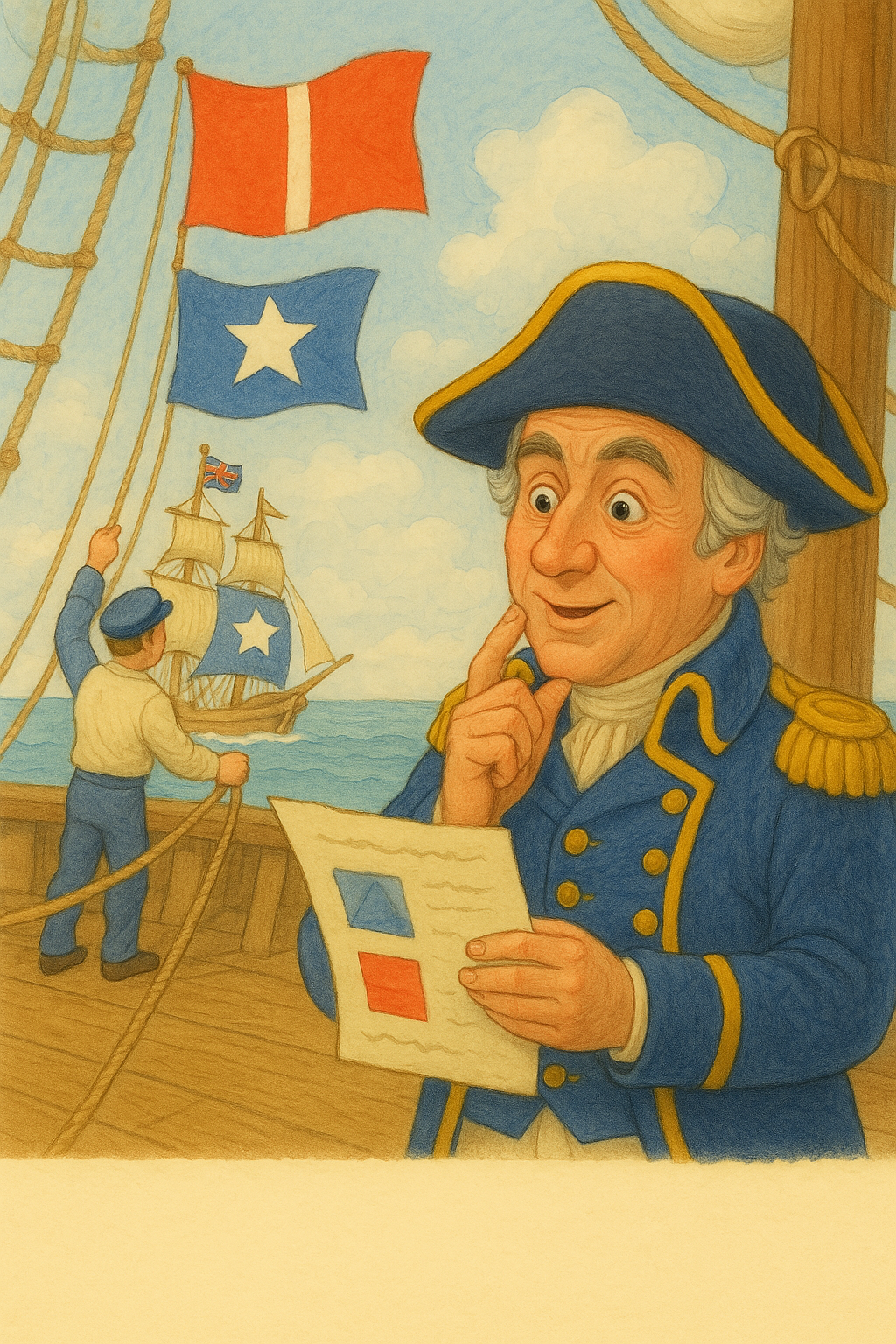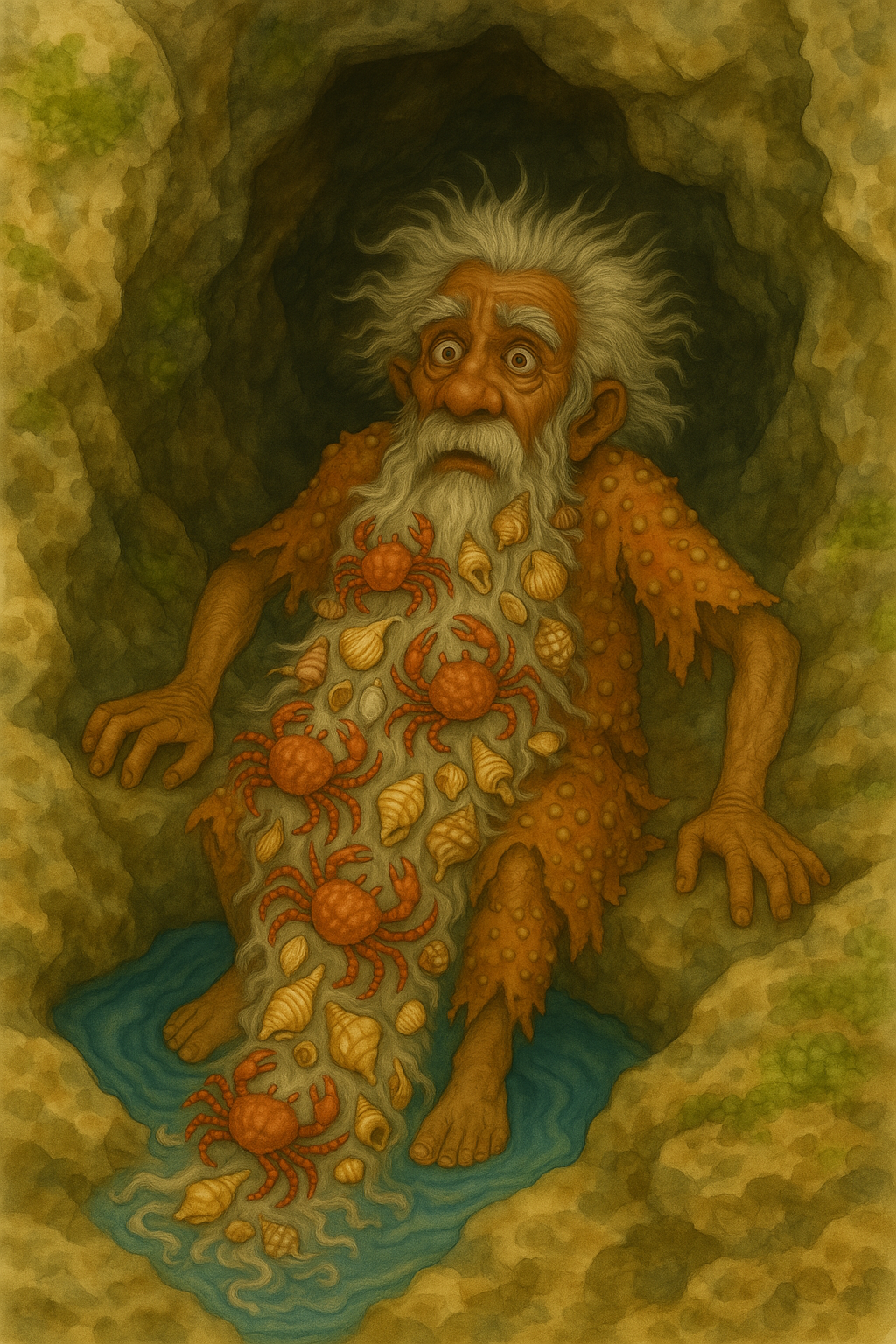
Curaçao (True) Children’s Stories
Admiral Popham
Admiral Sir Home Riggs Popham (1762–1820) was a fascinating and somewhat controversial figure in British naval history. His life was filled with daring adventures, inventive schemes, and colorful episodes that reflect his brilliance and occasional recklessness.
Popham is best known for developing a revolutionary naval signal code that enhanced communication during battles. His system of using numerical flags was adopted by the Royal Navy in 1803 and played a critical role in the Battle of Trafalgar (1805). Lord Nelson famously used Popham’s code to signal "England expects that every man will do his duty."
As part of the operation to seize the Dutch-held Caribbean island, Popham and his forces aimed to subdue local defenses quickly. One of the most vivid accounts, though possibly apocryphal, claims that Popham personally ordered a cannon shot to be fired into a church. The canon balls is still proudly stuck in the fort’s church facade.
This story explains what really happened.
Admiral Popham & the Talking Flags
Long ago, there was an eccentric British sailor and inventor named Admiral Popham. When he sailed the seas over 250 years ago, ships didn’t have phones or radios to talk to one another. To speak to his other ships, he would have to shout across the waves or send letters in small rowboats, which took far too long—especially when they needed to work together in battle or share urgent news.
One day, as Popham watched the wind fluttering the sails of his ship, an idea struck him like a bolt of lightning. “What if I could make the wind speak?” he wondered. He hurried to his cabin and began scribbling on a piece of paper.
Using flags, Popham created a secret code. Each flag was a command. The next day he tested it. One ship wave flags to the another ship. For example:
A red-and-white striped flag could mean “Attack!”
A blue flag with a star could mean “Follow me.”
It worked, By raising these flags in different combinations, ships could communicate without shouting. But Popham didn’t stop there. He wrote a secret book where numbers were matched to important phrases sailors needed. For example:
Number 2296 = “There is a large Enemy Fleet”
Number 2297 = “There is a small Enemy Fleet”
This clever flag system made it possible to send messages quickly, even across a battlefield.
But not all of Popham’s adventures went according to plan. One curious tale took place outside of the port of Willemstad on the island of Curaçao. Popham and his British fleet had arrived to capture the island from the Dutch, and the Admiral, confident that the island would surrender without a fight, raised his colorful signal flags to tell his ships to “Hold fire.”
Number 371 = Hold
Number 295 = Fire
But just as he did, a cannonball suddenly flew from one of his ships with a loud BOOM! It flew over the port and crashed into the island’s largest church, lodging deep into the wall. The townspeople froze, staring at the metal cannonball now stuck, smoking on the side of the church.
The signaling officer had mistakenly misread the code and only saw flag number 295 = Fire
It seems that the people of Willemstad, had their own flag system. To signal surrender, they raised a WHITE flag. Perhaps fearing what else might come next from this unpredictable admiral, they quickly used their white flags, signalling peace.
If you visit Curaçao today, you can still see that cannonball buried in the church wall, a lasting reminder of Admiral Popham’s unusual victory. Even though things didn’t go exactly as planned, Popham never minded when his adventures took unexpected turns.
Please play with Popham's code book. He assigned the digits 0 to 9 to ten signal flags, which were used in combination. Code numbers 1–25 represented letters of the alphabet (omitting J and with V=20 before U=21); higher numbers were assigned meanings.
Tomasito
The Pirate Cave







